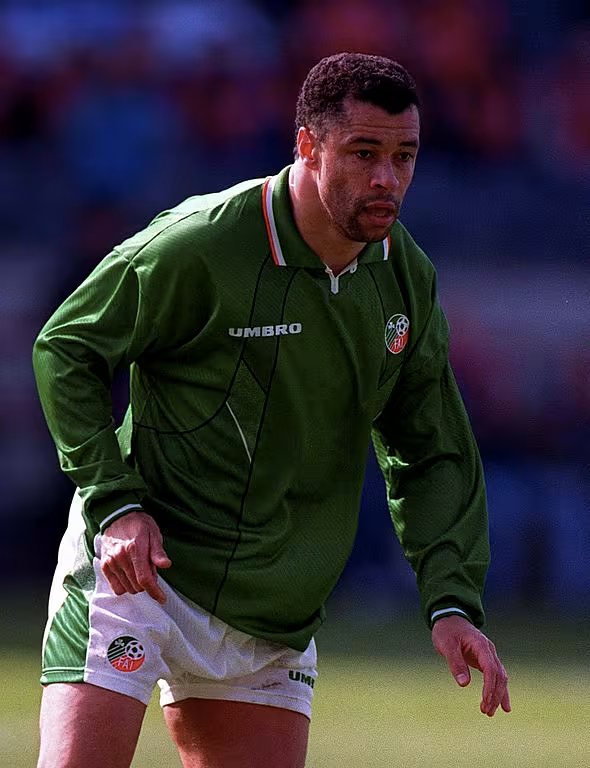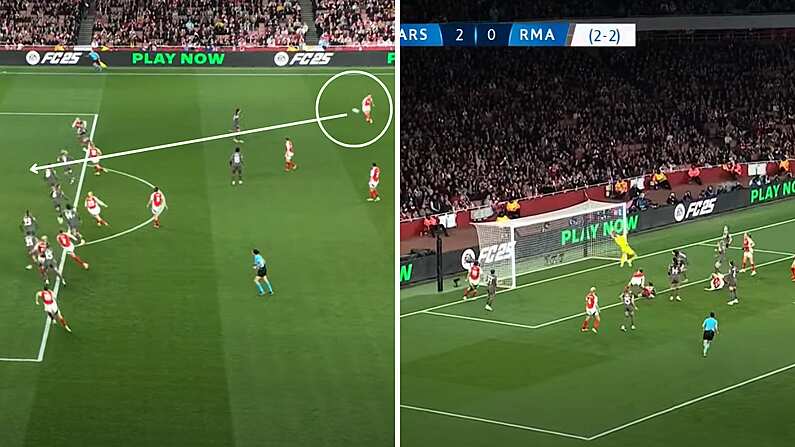Puma unveiled the new and improved Italy home shirt this week, boldly announcing that by utilising their patented ‘ULTRAWEAVE’ fabric they had produced the lightest football jersey ever made.
ULTRAWEAVE? Here-we-go.
The @Azzurri will debut their kit with the new ULTRAWEAVE technology tonight. And it’s confirmed by @FabrizioRomano. pic.twitter.com/bGINYUKzVI— PUMA Football (@pumafootball) October 6, 2021
“The jersey has a base frame of only 72 grams, with an extreme weight reduction achieved thanks to the woven fabric characterised by a four-way mechanical elasticity that makes Puma players and teams faster and more dynamic.”
Maybe someone should have told the Italian players. On Wednesday night, the European champions took to the field in the state-of-the-art shirts – faster and more dynamic if the press release was to be believed – and promptly lost 2-1.
It was the Azzurri’s first defeat in 38 games.
The result surely made the Puma PR department squirm in unison although, to be fair, the benefits of the lighter shirt could well become more evident over time.
This latest update got us thinking about the many technical innovations in football shirts over the past 40-odd years. Here are some of the key milestones.
From cotton to polyester
In the early part of the 1980s, many brands and teams made the shift from cotton to polyester. The advantages of using this material were twofold. Firstly, it had performance benefits. Polyester is lighter and therefore more comfortable, both in warm weather and in the rain (cotton jerseys had a tendency to retain water and become heavier as a result).
Secondly, it allowed brands to become more creative with their designs. With polyester it was possible to sublimate elaborate patterns into the fabric. This process became hugely popular towards to the end of the decade, producing some memorable results.
Perhaps the most famous examples are the Danish “half-and-half” shirt from the 1986 World Cup, and the iconic Netherlands jersey from Euro 88.

Big and bold
With sublimation in full flow, the nineties became synonymous with brash, out-there kits that were rich with wild patterns and bold colours.
Things also took a radical turn from a construction standpoint. All of a sudden, much baggier and looser-fitting jerseys and shorts began to appear, and smaller, skinnier footballers began to disappear inside huge gear that was often big enough for two.
really miss the glory days of baggy football jerseys. Teddy Sheringham could be hiding anything up his sleeves here pic.twitter.com/MFjQDSE499
— Gary Doyle (@thegarydoyle) February 9, 2019
Tottenham Hotspur are credited (or should that be “blamed”?) for this particular trend. For their 1991 FA Cup final against Nottingham Forest, Spurs took to the Wembley pitch in Umbro shirts with longer than usual sleeves, and shorts that came down to the knee. Prior to this, shorter shorts (more akin to the GAA style, which has stayed en vogue to this day) were more common.
The baggy era produced some unforgettable images of small-to-regular sized men made to look like children as their oversized apparel swallowed them up. The fact that teams were often issued with large or extra-large jerseys as standard did little to help in that regard.

Photo by Ray McManus/Sportsfile
The Kappa Kombat 2000
#RandomKitOfTheDay
Italy Euro 2000 home shirt
In the world of baggy football shirts, Kappa changed the game with their ultra slim shirts for Euro 00
The Lycra mix material became made this shirt a pioneer and said goodbye to baggy sleeves and shirts pic.twitter.com/HMkNWDRfYg— Upper90CustomJerseys (@CustomUpper90) April 11, 2020
The Italians are known for sartorial excellence so it should come as no surprise that they came up with the next major innovation.
For Euro 2000, Italy sported a skin-tight Kappa shirt that could scarcely have been more radical considering what had come before. The new garment, dubbed the Kappa Kombat 2000, was not only tighter but had far more elasticity, a performance benefit that was said to give the attacker an advantage as it allowed them to stretch further away from the pesky defenders intent on dragging them back.
The style was replicated by other brands, although it would be a number of years before tight-fitting gear became the norm.
Cameroonian innovation
In 2002, Cameroon turned heads at the African Cup of Nations by showing up in Mali with jerseys that had no sleeves. The plus side of wearing this unique Puma shirt was pretty obvious. It’s hot in Mali. Less clothing = cooler players.
The tank tops served the Indomitable Lions well. They won the competition, defeating Senegal on penalties in the final.
FIFA intervened, however, (no happy story ever started with those three words) and ordered Cameroon to cease wearing the sleeveless shirt as it went against the association’s rules on playing gear. From that point on, the home and away sleeveless jerseys were worn with a black undershirt, as was the case when the African champs played Ireland in the 2002 World Cup in Japan.

1 June 2002; Matt Holland celebrates following Ireland's 1-1 draw Cameroon at the 2002 World Cup. Photo by David Maher/Sportsfile
FIFA won that particular battle, but Eto’o and co. had another trick up their non-existent sleeves.
Puma’s next kit would prove to be even more unusual: an incredibly daring all-in-one shirt and shorts combination. Sepp Blatter wasn’t a fan. Cameroon wore it anyway and incurred a hefty fine and a World Cup qualifying points deduction for their troubles, although the punishment was later quashed when Puma threatened a lawsuit.
Cameroon's 2004 one piece kit pic.twitter.com/L1UO9yjdKA
— AfricaFootballClassics (@AfricaClassic) March 31, 2020
The Cameroon x Puma innovations were eye-catching but, ultimately, they never caught on.
Focus on performance
Throughout the first decade of this century, brands began to market the performance benefits of their football shirts like never before. Nike had their Cool Motion jerseys in 2002 which featured perforated segments designed to keep players cool in the Japanese and Korean heat.
It worked for Brazil. In their distinctive Cool Motion kits, and with Nike superstar Ronaldo to the fore, they picked up their fifth World Cup when they defeated Germany in the final.
Around this time, adidas also introduced their ClimaCool technology. Fabrics with ClimaCool are said to draw sweat away from the body and increase micro-ventilation through their mesh panels. The material has been used for a wide range of apparel and it became a common feature of all adidas football kits.
Many brands have since developed their own versions of this kind of technology.
Over the course of the last decade, jerseys have become more form-fitting (sometimes to the dismay of regular football fans with regular body types). Gone are the days of the baggy sleeves.
The lightest jersey ever
Which brings us up to Puma’s latest effort, the “lightest jersey ever”. Although it looks very similar to the shirt Italy wore in their Euro 2020 final victory over England, the new shirt is made up of just two panels of material, which reduces the amount of seams and therefore improves aerodynamics and increases comfort.
It may not have done Roberto Mancini’s men much good against Spain on Wednesday night, but this could well be the future of football shirts: as light and as aerodynamic as possible.














